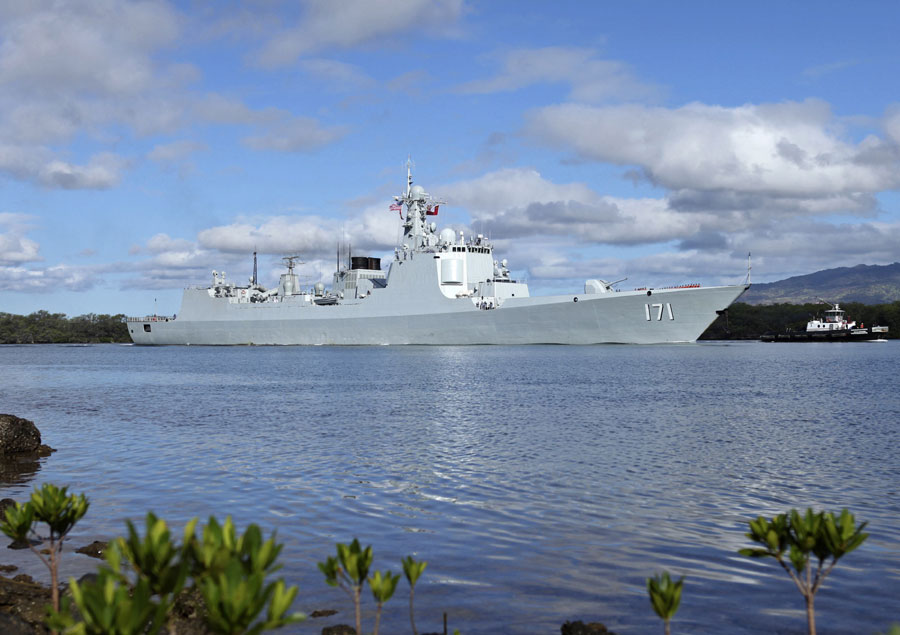环太平洋军演中国派遣第二大舰队
23 countries will take part in the Pacific-rim naval drill this year. The United States has sent the biggest
contingent, followed by China.

The Chinese People's Liberation Army (PLA) Navy guided missile destroyer Haikou (171) arrives at the Joint base Pearl Harbor Hickam to participate in the multi-national military exercise RIMPAC 2014, in Honolulu, Hawaii, June 24, 2014. [Photo/Agencies]
The Chinese deployment includes a guided missile destroyer, a guided missile escort ship, a multi-purpose supply ship and a hospital ship. China’s Peace Ark is the first hospital ship to take part in RIMPAC. The multinational fleet has carried out several training exercises on its way to Guam, including firing, emergency response and resupplying.
This is China’s first time at the world’s largest international maritime exercise. Expert say China will also join exercises against non-traditional security threats.
"Non-traditional security threats are common threats faced by all countries. The threats cannot be solved by any single country. That’s why I believe China’s participation will help maintain regional and world peace and stability. China has sent four ships, all representing China’s best combat capability at this time. It shows the Chinese navy is confident and open to international cooperation. Currently there are some frictions between China and the US on issues like cyber security, the South China Sea and the East China Sea. Despite that, the Chinese navy accepted the invitation to Pacific-rim drill because it’s quite natural for us to have disagreements and frictions. China and the US have different political and social systems, different cultural backgrounds, and different development paths. The key is that both of us should view and manage these conflicts properly. only communication and cooperation will bring us closer and provide opportunities to resolve problems," said senior captain Zhang Junshe, vice president of Naval Research Institute.







